Whether you're a budding astronomer, space enthusiast, or revising for a school exam, knowing the planets in order throughout our Solar System can be incredibly useful.
The most common way of deciding the order of planets is based on the distance of each planet from the Sun. To measure these colossal distances between each planet and the Sun, scientists use Astronomical Units (AU), rather than kilometres. An AU is the distance between the Earth and the Sun, which is a staggering 1.5x108 km (149597870.691km, to be exact).
You can also order the planets in terms of size (we’re using diameter to measure this). Either way, you may need to come up with a planet order mnemonic to help remember it (we've got you covered below).
Order of the planets from the Sun
The Sun
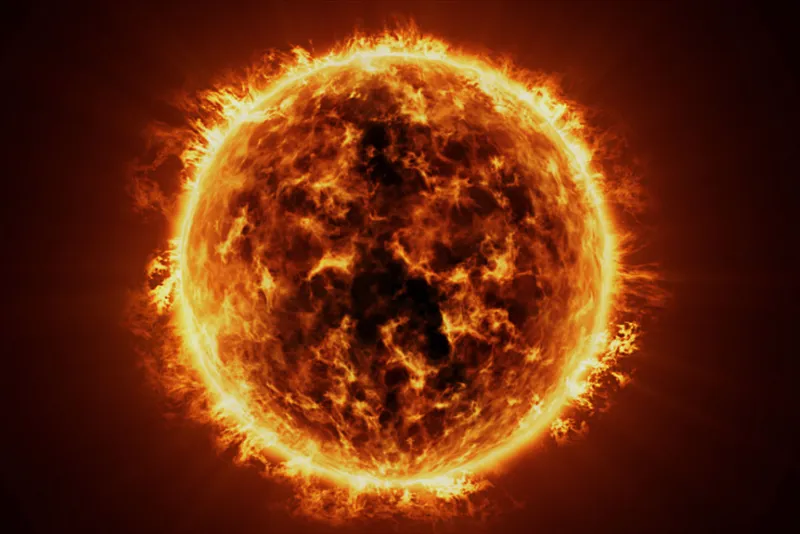
| Size (diameter) | 1,392,700km |
| Mass | 1.989 x 1030kg (around 330,000 times that of Earth) |
| Length of day | 25 Earth days at the equator |
| Surface temperature | 5,500°C (9,932°F) |
| Number of moons | None |
| Gravity compared to Earth | Between 27 and 28 times stronger than the Earth |
The Sun, while not a planet, is what our Solar System’s bodies orbit around. The Sun is so large that you can fit over 1.3 million planet Earths inside of it. It's so big that it actually accounts for over 99 per cent of the Solar System’s total mass.
How hot is the Sun? At its core, the Sun is around 15 million°C (27 million°F) while its outer atmosphere measures around 2 million°C (3.6 million°F) on average. Some areas of its atmosphere can reach a staggering 20 million°C (36 million°F).
What’s more, the Sun converts 600 million tonnes of hydrogen into four million tonnes of energy every second. It’s also estimated to have become about 30 per cent brighter since its formation around 4.6 billion years ago.
Fun fact: The Sun isn’t actually yellow/orange, as you might think from its various illustrations, including the one above. The actual colour of the Sun is white.
Strangely, there is such a thing as a day on the Sun – this is measured as the time it takes for the Sun to complete one full rotation relative to its distant stars.
Mercury
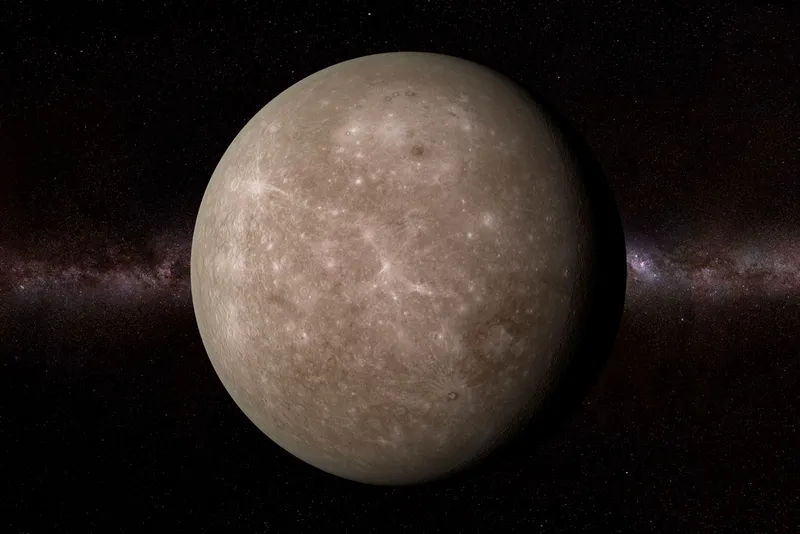
| Size | 3,457 km diameter |
| Mass | 0.33010 x 1024 kg (around 5.5 per cent of Earth) |
| Distance from the Sun | 0.4 AU (on average) |
| Length of day | 59 Earth days |
| Surface temperature | -180 °C (-290 °F) to 430 °C (800 °F) | Average 167 °C (333 °F) |
| Number of moons | None |
| Gravity compared to Earth | Around 38 per cent of Earth’s gravity (100 pounds on Earth would weigh 37.8 on Mercury) |
Mercury is the closest planet to the Sun and is the smallest planet in our Solar System after Pluto was reclassified as a dwarf planet in 2006. Mercury circles around the Sun in an egg-shaped orbit.
Thanks to its egg-shaped orbit, Mercury is also the closest planet to Earth, on average. Venus is on average 1.14 AU from Earth, while Mercury is a little closer at 1.04 AU on average.
Its rocky surface is reminiscent of the Moon’s – it is loaded with canyons – astronomers have even discovered a massive 250-mile-wide trench on the planet. This canyon may suggest that Mercury is getting smaller.
Venus
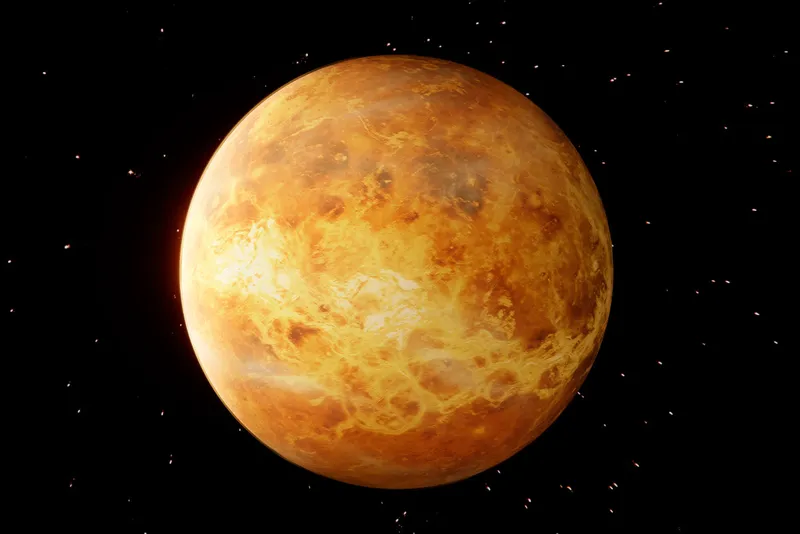
| Size | 12,104 km diameter |
| Mass | 4.8673 x 1024 kg (around 81 per cent of Earth) |
| Distance from the Sun | 0.72 AU average |
| Length of day | about 117 Earth days |
| Surface temperature | Average 464 °C (867 °F |
| Number of moons | None |
| Gravity compared to Earth | Around 91 per cent of Earth’s gravity (100kg on Earth would weigh 90.7kg Venus) |
Venus is closest to Earth in size and gets closer to us during its orbit than any other of our Solar System’s planets (although Mercury is closest, on average). Although it is similar enough in terms of size and makeup, Venus can get extremely hot – it is generally the hottest in the Solar System.
The planet's heat, remarkable atmospheric pressure (over 90 times that on Earth) and corrosive acid rain mean that – despite its distance to us – Venus is not a good candidate for an off-world colony. Additionally, the planet's atmosphere is toxic and is around 96 per cent carbon dioxide.
Venus and Earth are remarkably similar planets – both planets feature an iron core and rocky exterior crusts. Volcanoes erupt on both Venus and Earth (not a common feature on planets in our Solar System). As of July 2020, Venus has at least 37 volcanoes that are active.
Fun fact: Venus has its own kind of rainbow, caused by the interference of light waves within droplets. In the form of a series of coloured concentric rings, they are called ‘glories’.
Earth
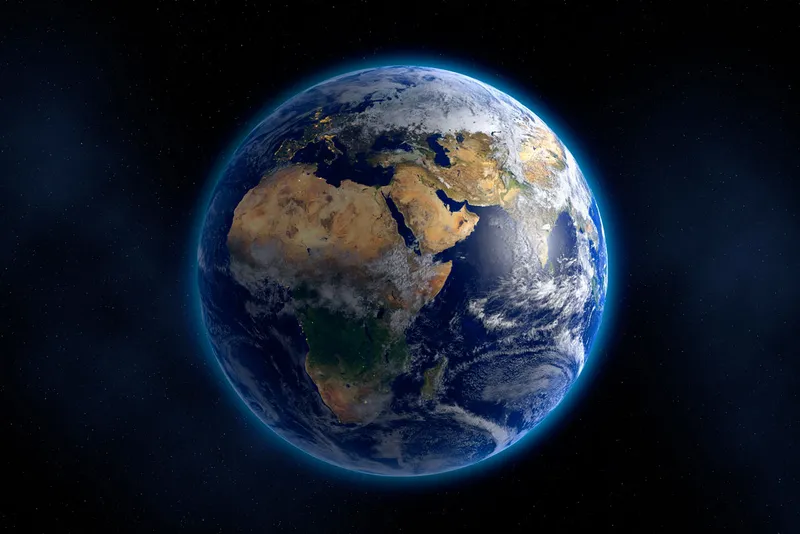
| Size | 12,756 km diameter |
| Mass | 5.9722 x 1024 kg |
| Distance from the Sun | 1 AU |
| Length of day | 24 hours |
| Surface temperature | Average is 15 °C (59 °F) |
| Number of moons | One |
The Earth, our home planet, is the only planet in the Solar System to have just one moon. It is also the only world covered in liquid water and life (that we know).
The Earth is losing around 50,000 tonnes of mass annually. But, given its current mass, it would take close to 120,000 trillion years for it to completely disappear.
Its name originated from the Indo-European base ‘er’, which gave us the Germanic noun ‘ertho’, modern German ‘erde’ and the English ‘earth’.
Mars
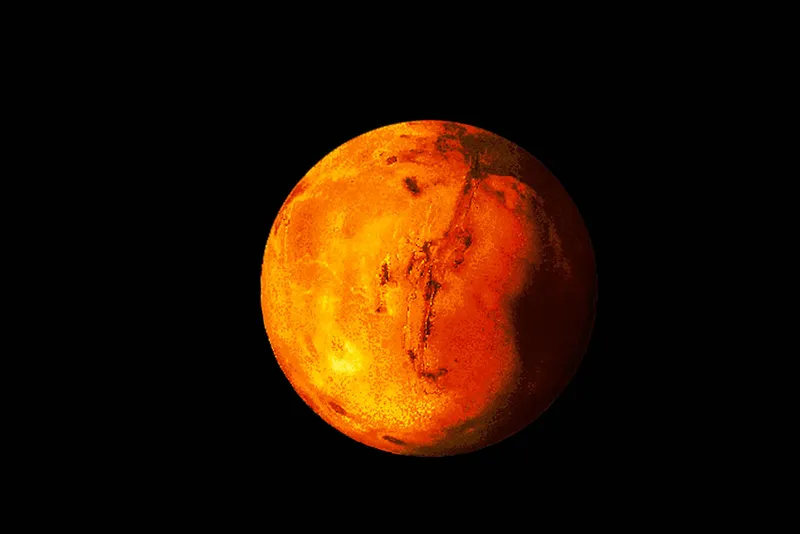
| Size | 6,792 km diameter |
| Mass | 0.64169 x 1024 kg (just over 10 per cent of Earth) |
| Distance from the Sun | 1.52 AU average |
| Length of day | Around 24.6 hours |
| Surface temperature | Average -63 °C (-81.4 °F) | can be as high as 20 °C (70 °F) and as low as -153 °C (-225 °F) |
| Number of moons | Phobos and Deimos |
| Gravity compared to Earth | Around 38 per cent of Earth’s Gravity (10kg on Earth would weigh around 38kg Mars) |
Mars, the Red Planet, gets its red appearance due to the rusting of iron found in rocks and dust. Mars is a surprisingly cold planet, with high temperatures of just 20 °C (70 °F) on its surface – its average is a chilly -63 °C (-81.4 °F).
Although we all know Mars as the dusty red planet, it is thought to have had a very watery past. Kasei Valles, the expansive system of channels that stretch across the Martian surface, was likely formed by multiple floods caused by volcanic activity over three billion years ago.
Mars is home to the tallest mountain in the Solar System, Olympus Mons. The huge volcano measures around 21.9 km from base to peak.
Jupiter
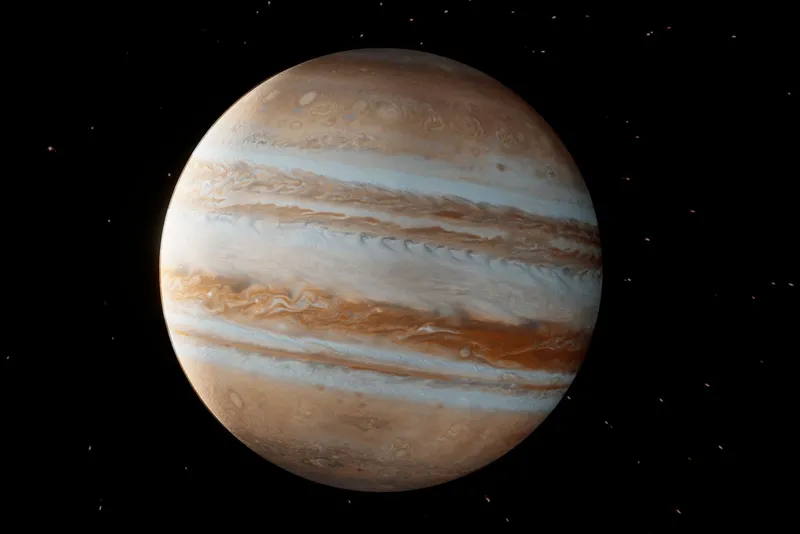
| Size | 142,984 km diameter |
| Mass | 1,898.13 x 1024 kg (just under 318 times that of Earth’s) |
| Distance from the Sun | 5.20 AU average |
| Length of day | 9.9 hours |
| Surface temperature | -108 °C (-162.4 °F) average |
| Number of moons | 95 |
| Gravity compared to Earth | About 2.64 times that of Earth’s (10kg on Earth would weigh around 264kg on Jupiter) |
Jupiter is the largest planet in the Solar System and the first of the gas giants. The fifth planet from the Sun is mostly swirling gases and liquids, meaning it doesn’t have a true surface. Those swirling gases and liquids help create the planet's stripy appearance.
Often referred to as a failed star, Jupiter’s atmosphere is mostly hydrogen-based. Even though it is massive, the gas giant isn’t big enough to commence thermonuclear reactions in its core and thus become a real star.
The Great Red Spot of Jupiter, which has astounded and confounded astronomers in equal measures since time began, is colder at the top and warmer at the bottom. It’s an ‘anticyclone’ that rotates in a clockwise manner. NASA’s Juno spacecraft revealed that the spot likely has a depth of around 500 km.
Saturn
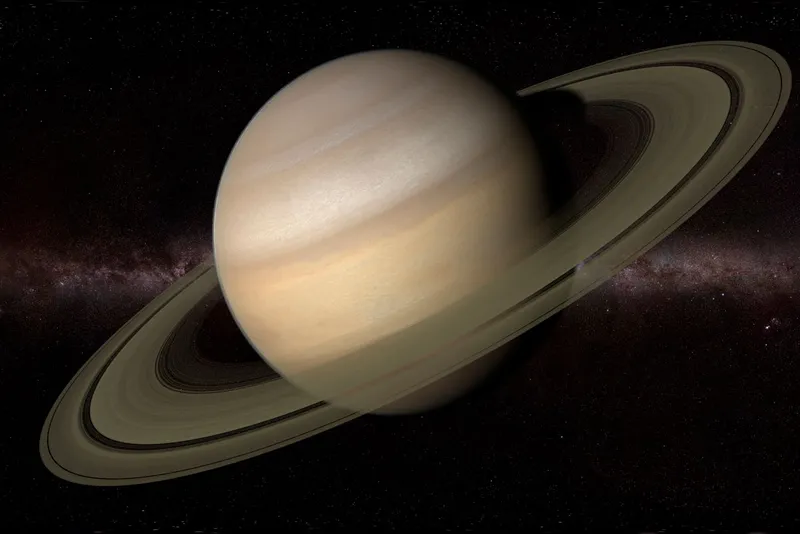
| Size | 120,536 km diameter |
| Mass | 568.32 x 1024 kg (just over 95 times that of Earth’s) |
| Distance from the Sun | 9.57 AU average |
| Length of day | 10.65 hours |
| Surface temperature | At 1 bar: -139 °C (-218.2 °F) average |
| Number of moons | 146 |
| Gravity compared to Earth | Around 1.16 times that of Earth’s (100kg on Earth would weigh about 106kg on Saturn) |
Saturn is the sixth planet from the Sun and is famous for its large rings. It is the second-largest planet in our Solar System behind Jupiter. Rings aren’t unique to it (rings can be found around all four of the gas giants, including Jupiter), but Saturn’s are the most noticeable and striking.
Saturn’s rings are composed mostly of water ice and almost completely devoid of dirt. This implies that the rings of this gas giant are relatively young, potentially forming from the destruction of a moon that took place due to the tidal forces of the planet.
Since Saturn’s axis is tilted by 26.73 degrees to the Sun (similar to Earth's 23.5-degree tilt), the planet experiences seasons.
Saturn has 146 officially recognised moons. The number is set to grow, too, with more expected to be officially confirmed and named by the International Astronomical Union.
Uranus
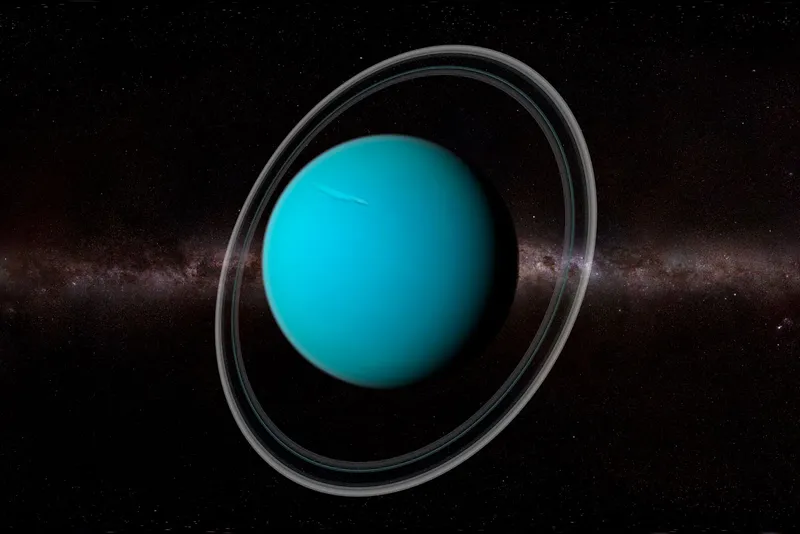
| Size | 51,118 km diameter |
| Mass | 86.811 x 1024 kg (around 14.54 times that of Earth’s) |
| Distance from the Sun | 19.20 AU average |
| Length of day | 17.24 hours |
| Surface temperature | -197 °C (-322.6 °F) average |
| Number of moons | 27 |
| Gravity compared to Earth | Just under 92 per cent of Earth’s (100kg on Earth would weigh about 91.8kg on Uranus) |
Uranus is the seventh planet in order from the Sun in our Solar System. What’s special about this gas giant is that it orbits the Sun on its side. This could be because it collided with a massive object not long after its formation.
The first planet to be discovered via the use of a telescope, by William Herschel in 1781, Uranus gets its (hilarious to some) name from the Greek god of the sky. It’s also just one of two planets (along with Venus) that spins in a different direction from the rest.
Uranus’s core should consist largely of carbon, hydrogen and oxygen, just as Neptune does, too. However, because of the extreme pressure on Uranuas, which measures several million atmospheres, unexpected and strange compounds should form on its surface.
Fun fact: The moons of Uranus are named after the works of William Shakespeare and Alexander Pope, rather than coming from Greek or Roman mythology. Moon names include Titania (from Shakespeare play A Midsummer Night's Dream) and Miranda (from The Tempest).
Neptune
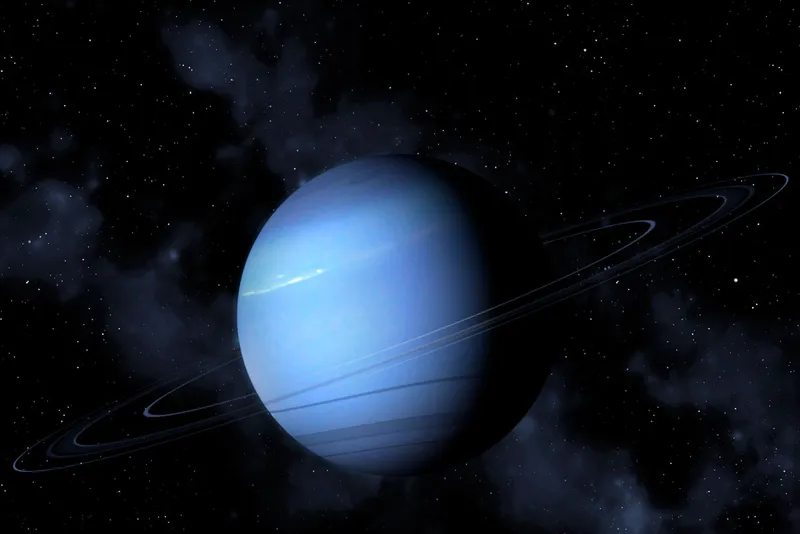
| Size | 49,528 km diameter |
| Mass | 102.409 x 1024 kg (around 17.15 times that of Earth’s) |
| Distance from the Sun | 30.06 AU average |
| Length of day | 16.11 hours |
| Surface temperature | -201 °C (-329.8 °F) average |
| Number of moons | 14 |
| Gravity compared to Earth | Around 1.15 times that of Earth’s (100kg on Earth would weigh about 115kg on Neptune) |
Neptune is the eighth and final of the planets in our Solar System. The last of the gas giants, Neptune could have been discovered as early as 1612 by Galileo. It is named after the Roman god of the sea.
Interestingly, as the planet has a similar tilt to Earth, Neptune also experiences seasons. However, since one year on the gas giant is around 165 years on Earth, one season lasts for over 40 years.
‘Planet Nine’
There is a theoretical ‘Planet Nine’ (not you, Pluto) that is estimated to exist at the fringes of the Solar System. If it exists, it would have to be around 600 AU away from the Sun and have a mass at least 10 times that of Earth’s. Planet Nine is also known as Nibiru and Planet X.
Astronomers noticed something peculiar while analysing the “motions of objects at the furthest edge of the Solar System.” It was discovered that “the elliptical orbits of many of these objects all seemed to line up in the same direction.” This could mean, then, that a sizeable ninth planet exists out there.
It’s theorised, too, that Planet Nine’s orbit around the Sun would take 20,000 years to complete.
Astrophysicists, meanwhile, have suggested that Planet Nine could in fact be a primordial black hole. This black hole could theoretically be the size of a grapefruit but with a mass that’s five to ten times that of Earth’s.
How to remember the planets in order
To remember the Solar System planets in order, it’s probably best to use a mnemonic. A mnemonic is a handy way to remember things if you need to learn a particular order or list of a set of items. Use the first letter of each planet’s name to develop a phrase, the sillier the better.
So take the first letter of each planet in our Solar System in order: Mercury, Venus, Earth, Mars, Jupiter, Saturn, Uranus, Neptune – M, V, E, M, J, S, U, N. Use these letters to create a phrase that’s silly enough for you to remember.
Popular mnemonics for remembering the Solar System planets in order include:
- My Very Excellent Mother Just Served Us Noodles
- My Very Easy Method Just Speeds Up Naming
- Most Very Elderly Men Just Slept Under Newspapers
If these mnemonics don’t work for you, try creating your own! Many Very Excellent Methods Just Spring Up Names, after all.
Order of the planets by size
The order of the planets in our Solar System by size (smallest to biggest) is as follows:
- Mercury | 3,457 km diameter
- Mars | 6,792 km diameter
- Venus | 12,104 km diameter
- Earth | 12,756 km diameter
- Neptune | 49,528 km diameter
- Uranus | 51,118 km diameter
- Saturn | 120,536 km diameter
- Jupiter | 142,984 km diameter
Is Pluto a planet?
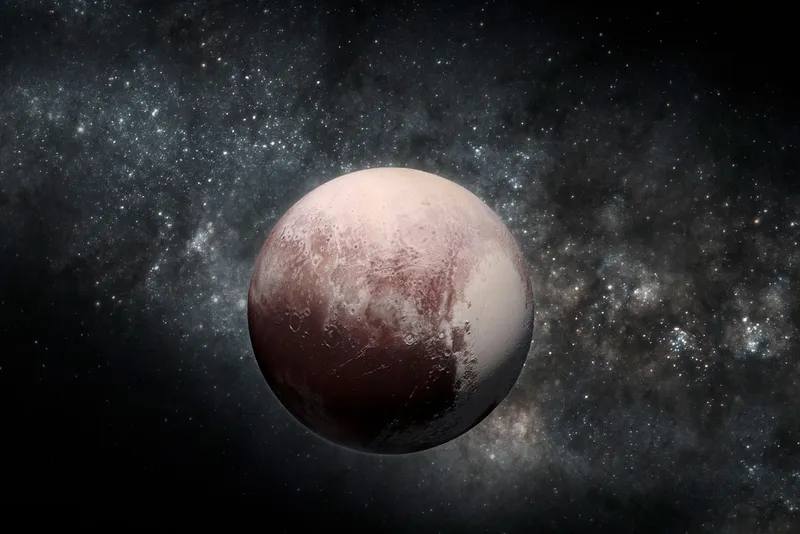
Pluto is not a planet but is instead a dwarf planet. This was decided by the International Astronomical Union (IAU) back in 2006 when Pluto was reclassified. It’s no longer considered the ninth planet in our Solar System.
The IAU decided that for something to be considered a planet it must meet three criteria. It must...
- Orbit its host star (In our Solar System that’s the Sun).
- Be mostly round.
- Be big enough that its gravity cleared away any other objects of similar size near its orbit around the Sun. This means their gravity should be strong enough to be the dominant object in their orbit, sweeping up or influencing most other objects around them.
It was decided that Pluto is not big enough for its gravity to clear away other objects of similar size in its orbit.
It's argued that if Pluto was declared a planet, three other recently similar bodies (known as Quaoar, Sedna, and Eris) should also be declassified.
Despite this, a planetary scientist, Paul Byrne, thinks Pluto should still be considered our ninth planet. Byrne reasons that “out in the Kuiper Belt, where neighbouring bodies are far, far more distant than in the inner Solar System, Earth would not necessarily be able to clear its neighbourhood.”
By this metric, it could be argued that the Earth would also not be considered a planet if it were located in the same area of space as Pluto.
Pluto fact file:
- Size: 2,370 km diameter
- Mass: 0.01303 x 1024 kg (around 0.2 per cent of Earth)
- Distance from the Sun: 39 AU average
- Length of day: About 153 hours (roughly 6.4 Earth days)
- Surface temperature: -226 to -240 ℃ (-375 to -400 ℉)
- Number of moons: Five (Charon, Nix, Hydra, Kerberos and Styx)
- Gravity compared to Earth: Around 1/15 compared to Earth (something weighing 100 pounds on Earth would weigh about seven on Pluto)
What dwarf planets are in our Solar System?
There are five officially recognised dwarf planets in our Solar System. Yes, Pluto now counts as a dwarf planet (get over it, it’s been classified as one since 2006).
Here are the officially recognised dwarf planets in our Solar System:
- Pluto
- Ceres
- Makemake
- Haumea
- Eris
To be considered a dwarf planet, the celestial object must orbit the Sun, be nearly round, but “have not been able to clear their orbit of debris”, according to NASA.
As of writing, the International Astronomical Union has only verified five dwarf planets in our Solar System. There may be over 100 more dwarf planets waiting to be discovered by astronomers, however.
